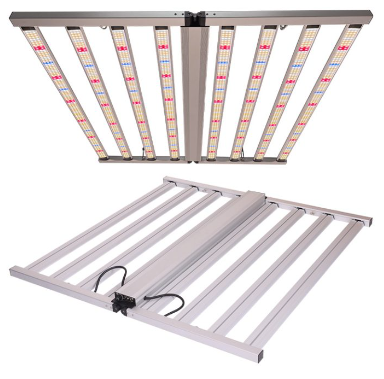As a dedicated gardener or commercial grower, understanding the role of infrared (IR) light in plant growth is crucial. Although infrared light is invisible to the naked eye, it significantly influences the health and productivity of plants. In this article, we will explore what infrared light is, how various types of grow lights—including LED grow lights—utilize it, and its impact on plant growth and flowering.
The Spectrum of Infrared Light

- Near Infrared: This is the shortest wavelength in the IR spectrum, commonly found in everyday devices like TV remotes. Near infrared light does not produce heat, making it suitable for certain plant growth applications.
- Mid Infrared: Slightly warmer than near infrared, mid-infrared light is used in scientific research and does not significantly impact plant health.
- Far Infrared: This type emits heat and plays a crucial role in promoting plant growth and blooming, making it essential for effective LED grow lights.
How Grow Lights Utilize Infrared Light
When considering the best grow lights for your indoor garden, it’s important to know how different types of grow lights incorporate infrared light:
High-Intensity Discharge (HID) Lights
HID lights are a staple among growers due to their high output and natural emission of infrared light—approximately 30% of their total light output. The heat generated by HID lights aids in plant growth and can be beneficial for flowering cycles.
LED Grow Lights
LED grow lights are increasingly popular for indoor gardening because they can be customized to emit specific wavelengths, including infrared light. Most LED grow lights primarily emit red and blue light, but many models now include infrared diodes to enhance their full spectrum, allowing for more effective plant growth and flowering.
T5 Grow Lights
T5 fixtures are another option for growers, emitting a small amount of infrared light. By combining T5 lights with infrared LED grow lights, you can create a more comprehensive light spectrum that supports healthy plant growth.
The Impact of Infrared Light on Plant Growth

Stimulating Flowering
Research has shown that infrared light enhances flowering by stimulating phytochromes in plants. This allows growers to manipulate flowering cycles, making infrared light an important factor in optimizing growth with LED grow lights.
Enhancing Growth
Plants often stretch toward light when shaded by taller neighbors. Infrared light encourages this upward growth, especially when combined with red and blue wavelengths. This makes it particularly valuable for growers looking to maximize the yield and quality of their crops.
Considerations for Using Infrared Light in Your Grow Space
Before integrating infrared light into your growing strategy, consider these essential factors:
Types of Plants
Different plants react uniquely to infrared light. Assess the specific crops you are growing to determine whether they will benefit from additional IR exposure provided by your grow lights.
Growth Goals
Decide how you want to manipulate your plants. If you’re working in a confined space and prefer compact growth, you might want to limit infrared exposure, as it tends to encourage vertical growth.
Cost Implications
While infrared light can enhance plant growth, it may lead to increased heating within your grow space, necessitating more ventilation and potentially raising your electricity bills. Balancing these costs with the benefits is crucial for effective gardening.
Safety Measures
Infrared light can pose risks, including skin burns. It’s important to wear protective gear when using IR lights to minimize potential hazards.
Best Practices for Using Infrared Light with Grow Lights
To effectively utilize infrared light in your growing environment, maintain optimal temperature and light intensity. Proper placement of grow lights and strategic arrangement of your plants can help prevent heat stress and promote healthy growth.
 Conclusion
Conclusion
Infrared light, especially when combined with red and blue light, can be a valuable asset in maximizing the effectiveness of your LED grow lights and promoting robust plant growth. The decision to incorporate infrared light depends on your specific growing conditions, plant types, and desired outcomes. At Shenzhen Andy Photoelectric Technology Co., Ltd., we offer high-quality LED grow lights equipped with a full spectrum, including 770 nm infrared diodes. For personalized advice on optimizing your indoor garden setup, don’t hesitate to contact us! By leveraging the benefits of infrared light, you can achieve outstanding results in your plant cultivation efforts.






























